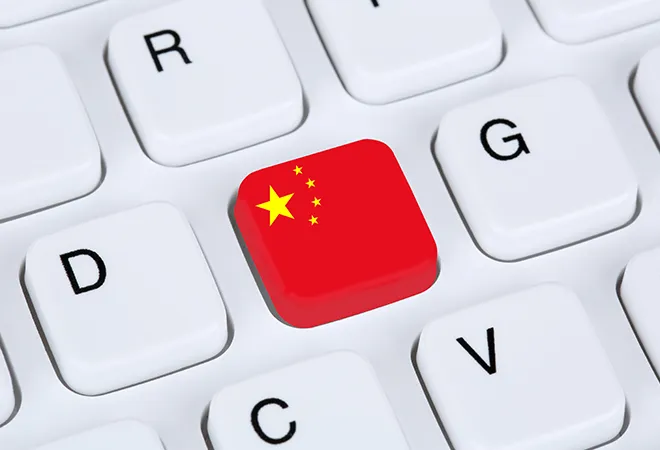-
CENTRES
Progammes & Centres
Location
Developing countries owe Beijing a lot more money than is commonly realized. This is how empires start.

China isn’t just the world’s largest exporter of goods: It’s now the world’s largest exporter of capital, too. Of course, these two facts are linked. China earns so much from being the world’s factory, and the spending of its households is so constrained, that it needs to find somewhere to park the difference. That’s the basic imbalance underlying the Belt and Road Initiative, China’s big push into the developing world.
Many analysts -- including senior US officials -- have long worried about the terms on which China parts with slivers of its giant pile of capital. Unlike traditional development finance, Chinese loans -- especially for building infrastructure -- carry fairly high rates of interest, and the assets they build often don’t earn enough to pay them back. It’s fair to worry that some countries could end up mired in debt, borrowing more from the Chinese than they can possibly repay.
Chinese officials claim to be incensed by the very notion, and some Western researchers aren’t convinced, either. There’s certainly a case to be made that confusion and lack of coordination lies behind China’s loan binge, rather than a sinister geo-strategic design. Others argue that China’s domestic imperatives, including concerns about depleting its vast pile of foreign exchange, might lead it to slow its acquisitive march.
On the other hand, recent work from a team of researchers based out of the Kiel Institute for the World Economy suggests we may not be worried enough. They discovered that half of all foreign debt to Chinese state-run banks and institutions is “hidden” from the normal databases. Consequently, “debt levels and the debt service burdens in two dozen developing countries are much higher than previously thought.”
Imagine China says it will finance a road or a power plant for an African or Asian country. The Chinese companies actually executing that project are the final recipients of the loan; instead of sending the money across international borders to the country in question and having that government pay the Chinese company in turn, the bank may just make the transfer to the company’s account within China. The resulting transaction wouldn’t show up in the official international data or even in national accounts. But the borrower would still eventually have to repay the interest and principal.
Worryingly, the Kiel researchers say that these loans are usually secured against public-sector or commodity revenues and their terms are rarely made public. Do they flow mostly to countries that are aligned, or subsequently align, with China? The Kiel study doesn’t say, but there is evidence that Chinese development aid, at least, is closely associated with political support at the United Nations.
Worse, it looks like Chinese capital flows disproportionately to the poorest countries; to those in crisis, such as Zimbabwe and Iran; and to oil exporters such as Angola or Venezuela. For many “highly indebted poor countries” that finally freed themselves of debt in the 2000s, it looks like the nightmare of the 1980s debt crisis may return. The Kiel researchers say debt in “a subgroup of low-income countries is close to reaching pre-HIPC levels, with Chinese lending being one of the main drivers.”
Regardless of what Chinese leaders say, this isn’t a pretty picture. The best-case scenario is that a subset of BRI countries will be pushed into another debt crisis, and we will have to rely on China’s goodwill to pull them out of it. Or, as is feared in the case of the International Monetary Fund’s bailout of Pakistan, multilateral bailout money may ultimately be used to rescue Chinese state creditors.
And the worst outcomes aren’t off the table either. The direction of Chinese lending -- towards countries on its periphery, those with resources its economy needs, those with poor domestic institutions or unstable politics -- means that we simply can’t assume that the BRI is just like any other infrastructure finance project. This is not the Marshall Plan.
Empires are not constructed overnight; they are created by a mixture, clear only in retrospect, of accident and ambition. As the Kiel researchers note, the structure of Chinese overseas finance bears considerable similarities to the imperial powers’ foreign lending in the 19th century. If the collateral for projects is a country’s natural resources, or its public-sector revenue, then what happens when that country refuses to pay up?
So far, Beijing has not pressed the issue; it has often doubled down instead, extending loan tenures and increasing its exposure. Should the world sit back and hope that this forbearance will last forever?
It’s time for the West to step up. China must be pressured to make its BRI lending more transparent and to follow global norms governing infrastructure finance. But, more importantly, we should all prepare to provide support, material and moral, to countries that want and need to renegotiate terms with China. Standing aside while Beijing corrals resources from the world’s poorest cannot be an option.
This commentary originally appeared in Bloomberg.
The views expressed above belong to the author(s). ORF research and analyses now available on Telegram! Click here to access our curated content — blogs, longforms and interviews.

Mihir Swarup Sharma is the Director Centre for Economy and Growth Programme at the Observer Research Foundation. He was trained as an economist and political scientist ...
Read More +